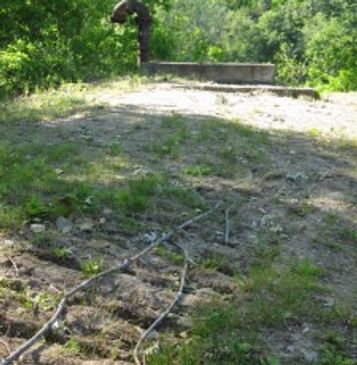This Website Has Changed From waylandwells.info to waylandwells.com
NStar
On June 12, 2012, NStar unexpectedly showed up in the vicinity of the Meadow View town well and demanded access to the well area, despite numerous warning signs that it was a drinking water protection area. The first images in this gallery show the condition of the area prior to NStar’s clear-cutting, with natural vegetation screening the well-serviced buildings and protecting the soil and its infiltration and filtration properties. The later images show the denuded landscape with huge tire tracks, evidence of NStar’s violation of even the highly sensitive Zone 1 well protection zone, largely beyond NStar’s legal jurisdiction.
Heavy equipment does not belong in a wellhead area. Pipes from the well are vulnerable to damage from excessive weight on the surface above. In the case of the Meadow view well, the actual wellhead is at the end of a several hundred-foot causeway connecting it to the service buildings. It is highly unlikely that the causeway was engineered to carry the load of the massive NStar equipment; in the forty years since it was built, it has carried only the light vehicles needed to dig and service the well. Yet huge tire tracks and onlookers’ observations witness NStar’s irresponsible use of the causeway. Since it lies outside NStar’s right of way, NStar had no legal right to do so.
In addition, heavy equipment routinely leaks fluids. Diesel fuel, hydraulic fluid, and lubricating oil can be expected to contaminate the ground on which such machinery operates. Stains on the mats in the attached photos attest to this reality. Such leaks near a wellhead can result in the contamination of drinking water.
But beyond the immediate damage from the clear-cutting operations, the very fact of clear-cutting is damaging to the well. Undisturbed vegetated soil acts as a sponge, absorbing rainwater and slowly releasing it into the ground, thereby recharging the well. Denuded soil promotes the immediate runoff of rainwater into the nearest tributary, robbing the well of its supply.
NStar has yet to respond in any way to the above issues.
For further information, see the NStar section.
NStar's Environmental Impact

























Copyright © 2024, Wayland Wells. All Rights Reserved.
Powered by GoDaddy
This website uses cookies.
We use cookies to analyze website traffic and optimize your website experience. By accepting our use of cookies, your data will be aggregated with all other user data.